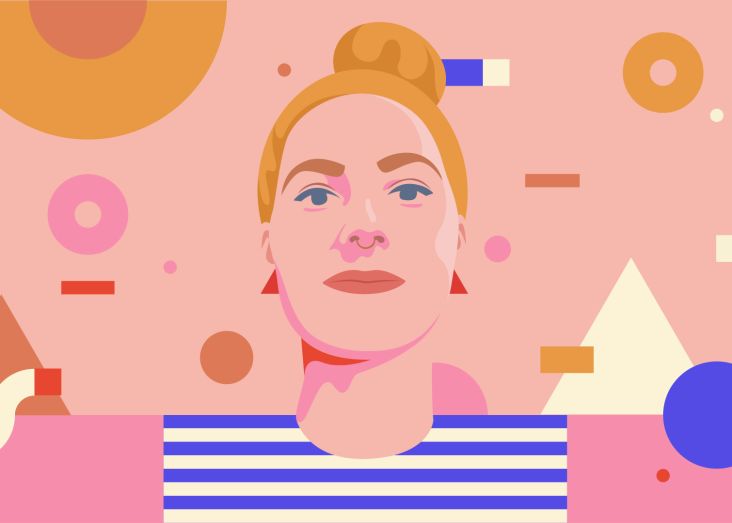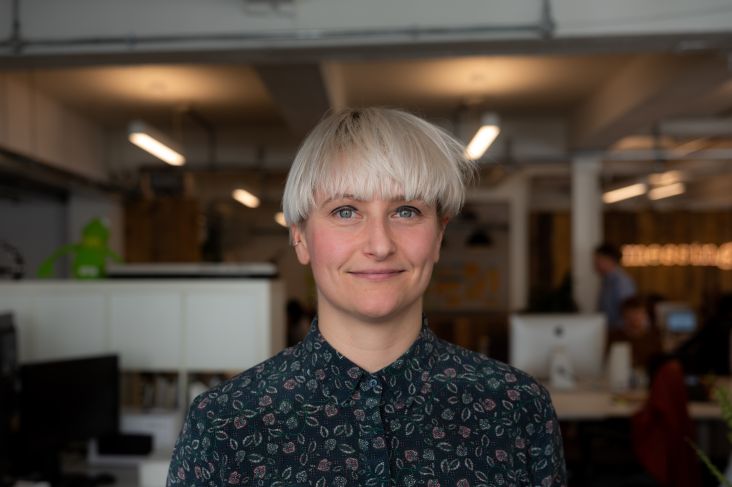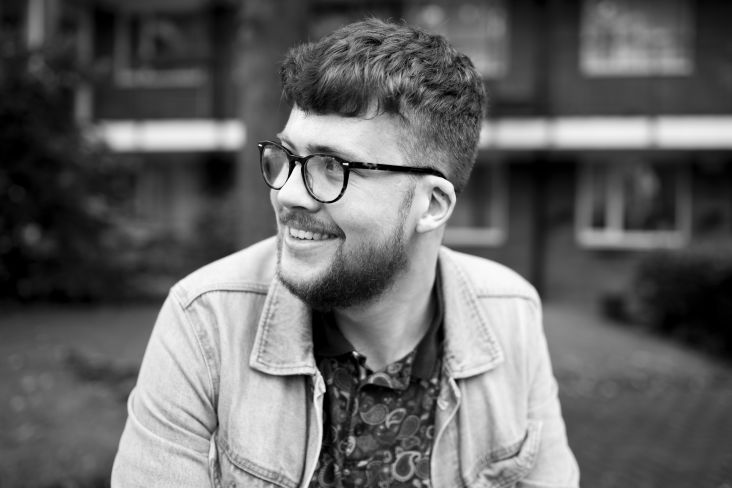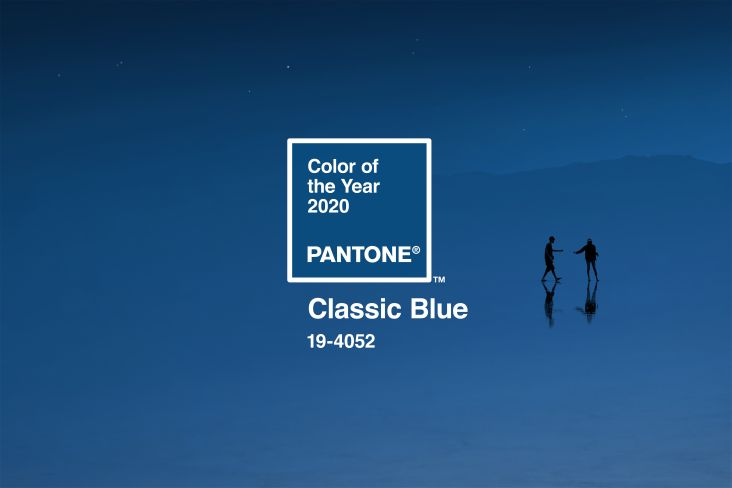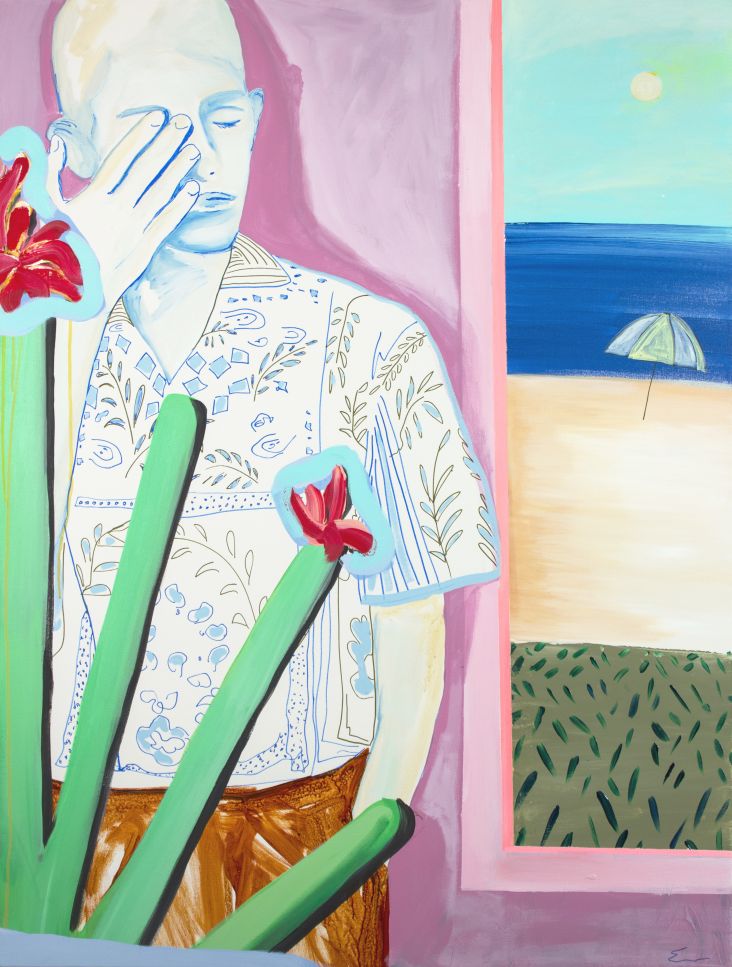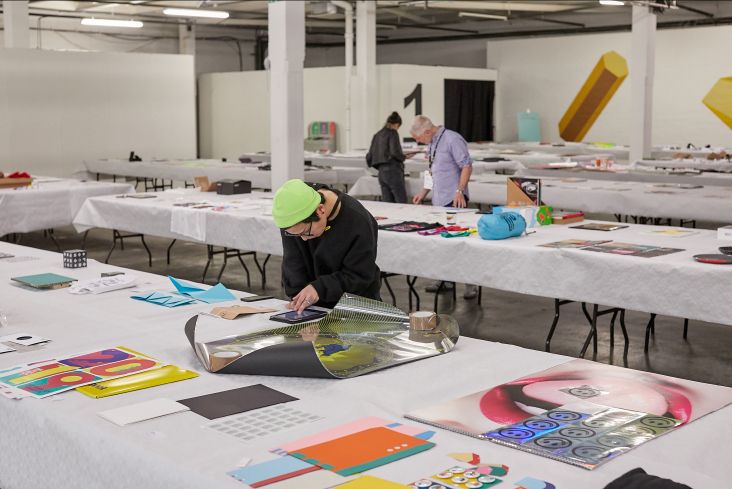Amber Vittoria on challenging gender stereotypes, finding a creative career and why you should follow your own path
Amber Vittoria is an artist and illustrator based in New York City whose portrayal of women in art has so far attracted clients such as Gucci, Google, NBC, The New York Times and Instagram.
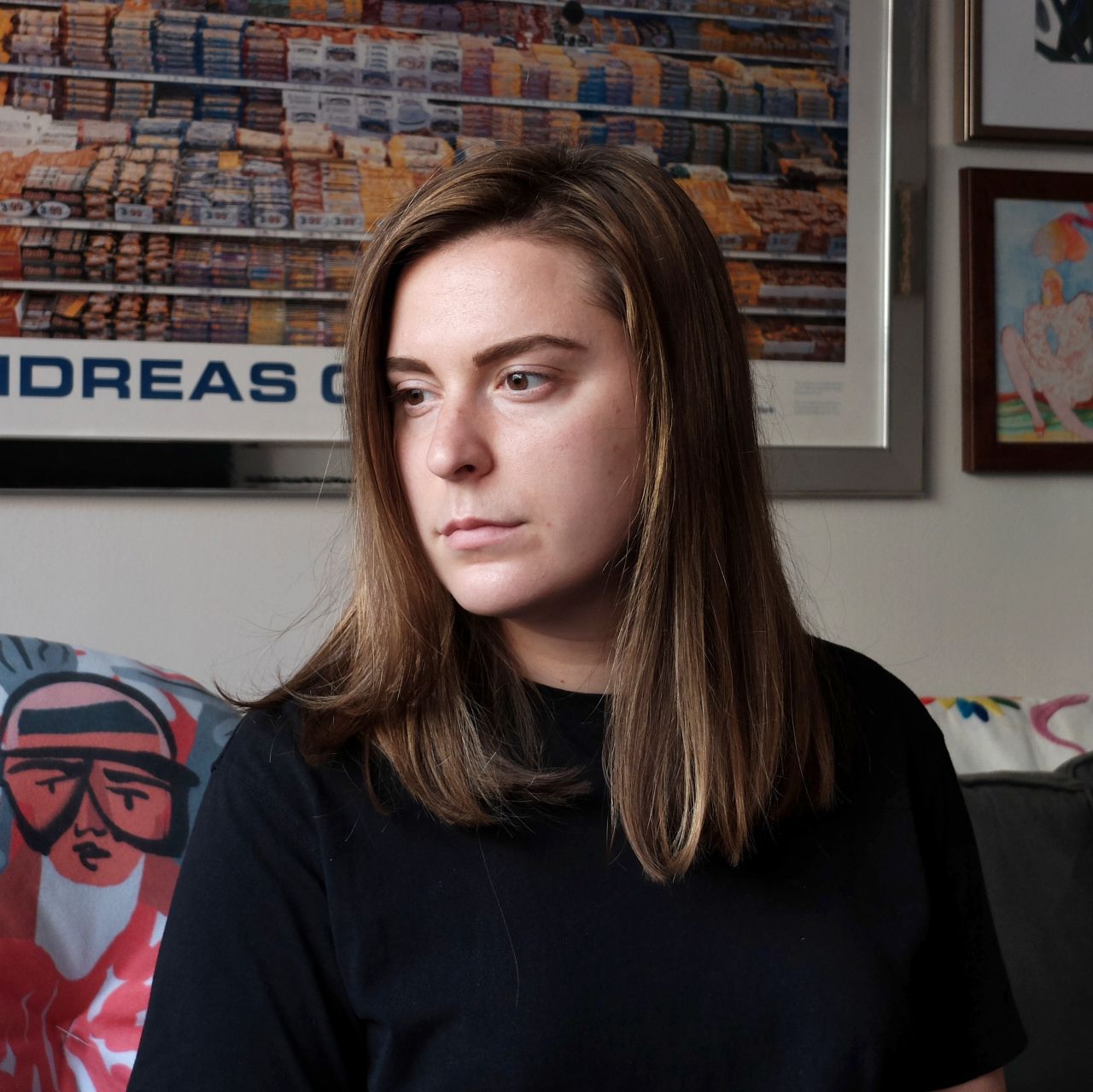
Her full-blown female characters strike quirky poses with big rounded figures, protruding body hair and overtly extended limbs. Full of colour and life, her work challenges gender stereotypes and forces us to rethink how we see the female form.
A Forbes 30 Under 30, Amber has won numerous awards for her portrayals of women and has been featured in many leading publications. On a December morning, we chatted to Amber about her life and work, and what she has planned next.
Tell us how it all started. Were you always creative?
My earliest memory of creativity was probably when I was around five to eight years old: I wanted an American Girl Doll so badly, but had to save up to get one (spoiler alert, what felt like an eternity to save $30 from birthday gifts, my parents said I had enough to get one, and they secretly helped cover the rest, even though it was quite an expensive doll). While saving up for the toy, I transformed an older cabbage patch doll of mine to be like an American Girl Doll. Those were one of the moments I felt that with a little imagination, and some items lying around my room, I could create almost anything.
From there, my memory is a bit foggy, but I have distinct flashes of learning how to colour in a colouring book with my dad, drawing on my bedroom wall with crayon, and taking local art classes. I learnt that art may be a path for me as a pre-teen, with my mom asking if that would be something I'd be interested in focusing on throughout the rest of middle school, high school, and beyond.
I took all of the art classes my school schedule would allow and found a connection with Boston University's College of Fine Art's graphic design course. I loved how graphic design didn't limit me to a specific medium (because at 18 I was unsure what type of artist I even wanted to be). I then graduated, worked full-time as a designer/art director, and fell into illustrating on the side, until that side passion turned into my present-day focus.
Your parents were really supportive then?
They are amazing. Neither are professional creatives themselves, but they saw that drawing and making things brought me so much joy. They taught me that following my passions will bring me so much happiness in my life, and I am so thankful for that.
You mentioned you worked full-time and illustration was just a side venture. Was it always your mission to go freelance?
I knew I wanted to work for myself, but when I was in school, I wasn't too sure what that exactly meant. As I graduated and worked full-time, I found a lot of freelance side jobs that leveraged illustration within design, and fell in love with illustrating.
How have you found working for yourself?
It definitely has its challenges, such as finding work on a consistent basis and managing my own time. That said, I much prefer these challenges over working for someone else.
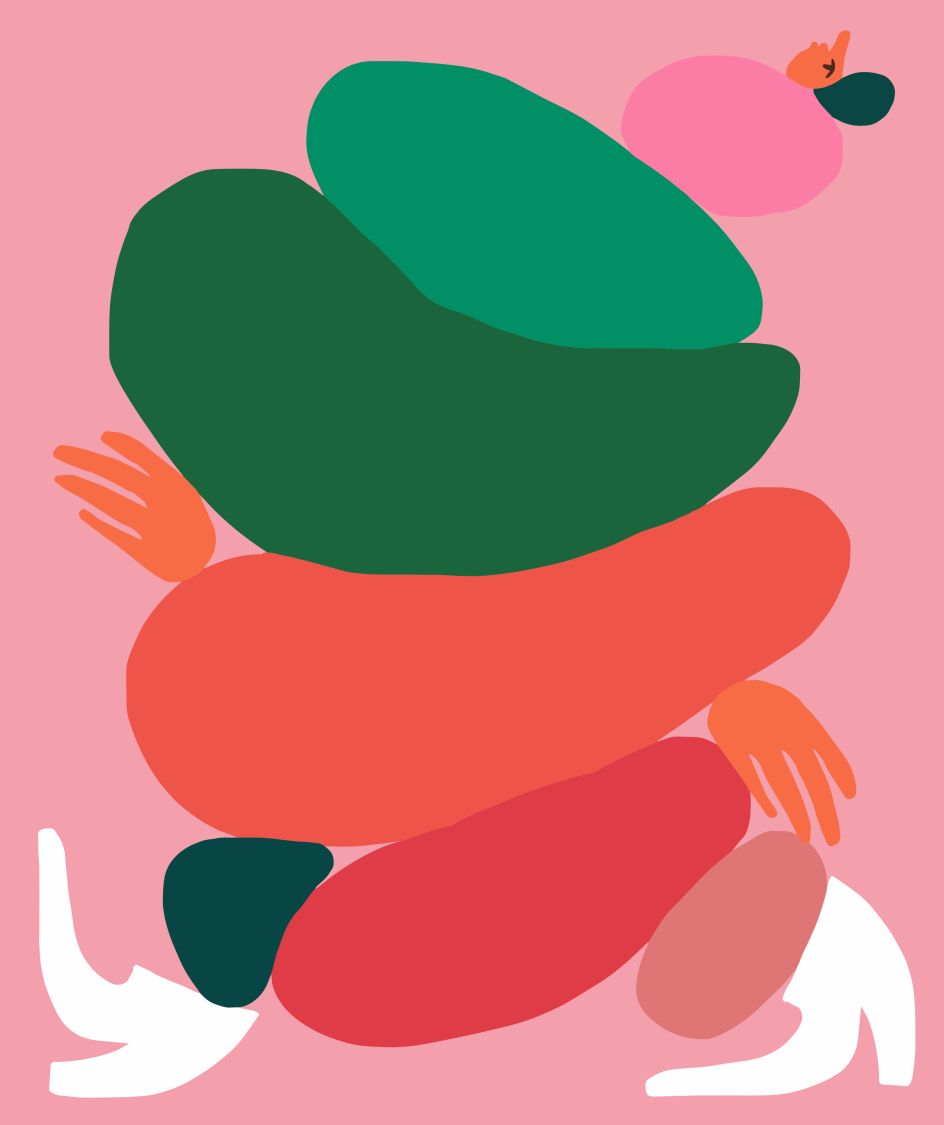
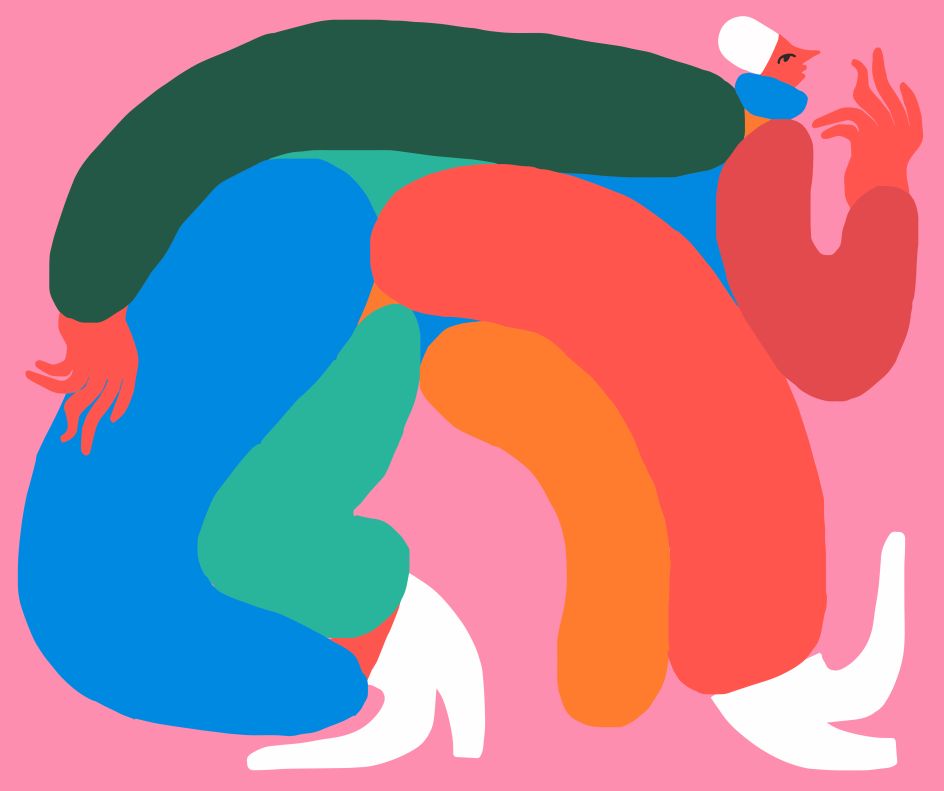
What have been the biggest hurdles?
Starting to get into a groove of reaching out to potential clients, working with people across major time zone differences (mainly to set up calls), and learning how to not overwork.
That's always a tough one, getting the balance right?
Definitely. I schedule everything on my Google Calendar, which helps me plan and ensures I'm not overbooking myself.
Moving on. You have a distinct style. Can you describe it and explain how you reached this point?
In regards to style, I love to begin with the idea that if you make something, it's inherently your style solely because it's made by you. My body of work leans into leveraging bright colours, bold shapes, and intimate details to tell a relatable story about womanhood, aiming to dismantle societal tropes that are set upon women both emotionally and physically.
I came to this current body of work through trial and error. Coming from a design background, I tend to approach works with composition, colour, and balance at the forefront of my mind, allowing the story to develop naturally. Over the years, I began to lean into subconscious patterns I was making from piece to piece (the colours I gravitated towards, how I drew eyes, how I depicted noses, etc), which has led me to the work I am most proud of today.
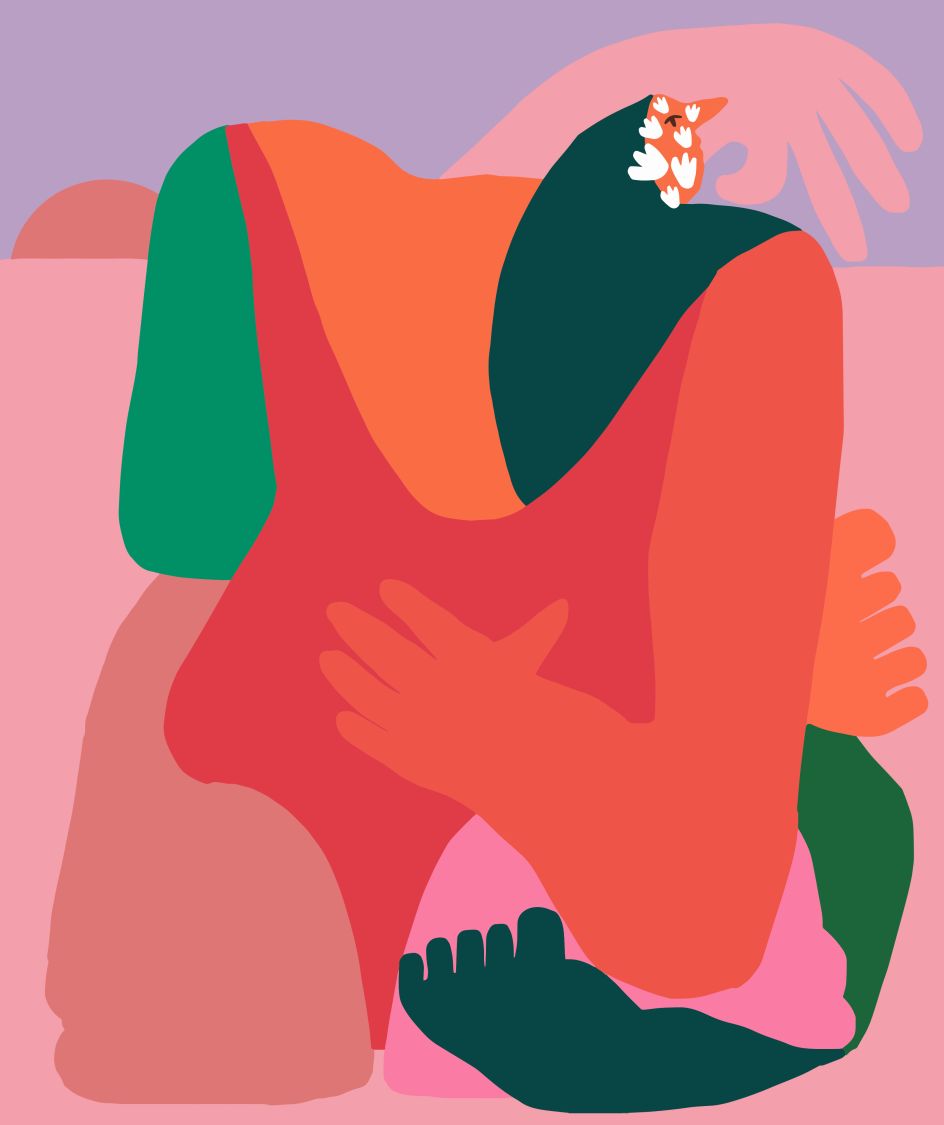
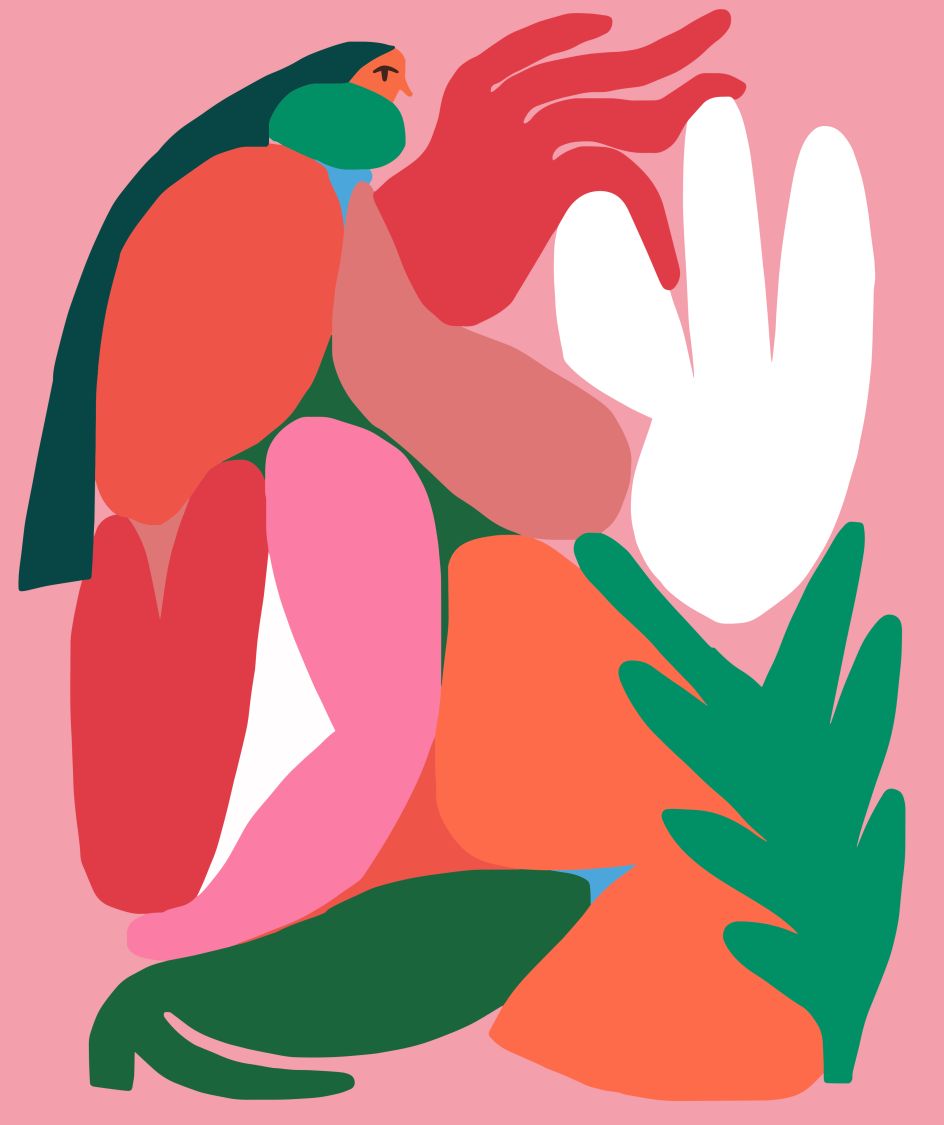
Have you personally had any negative experiences as a woman in the creative industries?
Definitely. Overall, the feeling of not having too many women in leadership positions (at my jobs specifically) made it a bit tough to envision myself as a leader. At times there were specific instances where I was told I was being too aggressive when asking for a raise and promotion (or when in my future that would specifically happen), my ideas would be passed on, then sold through if a man presented them instead. I was also told I was emotional and cared a bit too much. It definitely had me question myself as a person, as a working person, and my confidence.
Do you think things are getting better?
The amount of incremental change over the last few years has been incredible. Being able to see more women and non-binary folk in leadership and influential roles definitely inspires me and enables me to dream bigger than I have in the past. Seeing the patriarchal society and stereotypes we have all been taught slowly deteriorate gives me such hope for what our future holds.
How do others feel about your artworks of women?
I've been fortunate that many people resonate with the work I create, with the figures depicted within my pieces. To put work out into the world that is relatable and can create conversation has been amazing.
What are the kind of projects you're taking on now?
I recently collaborated with French department store Le Bon Marche; it was a series of illustrations depicting key looks from their major brands (Gucci, Louis Vuitton, Chanel) for their holiday 2019 catalogue. The challenge of depicting specific looks into the world I visually create was so much fun. I personally struggle with seeing myself in high-end adverts, so I hope that people who receive this catalogue can now start to see themselves in this luxury world.
I've also started to play with the idea of form more recently; depicting movement and womanhood beyond the traditional legs, arms or hands, to allow the figures to tell a bit more of an emotional story. My work definitely flows through seasons, and all of my figures are covered in fun coat-like shapes, as it is pretty cold in New York. It will be interesting to see if it changes when I go to Los Angeles in January!
Speaking of next year, what are you hoping the next 12 months will bring?
I'm hoping for 2020 to be a year of exploration; my goal is to take every other Friday to explore my work, and New York, to take an intentional break and reset.
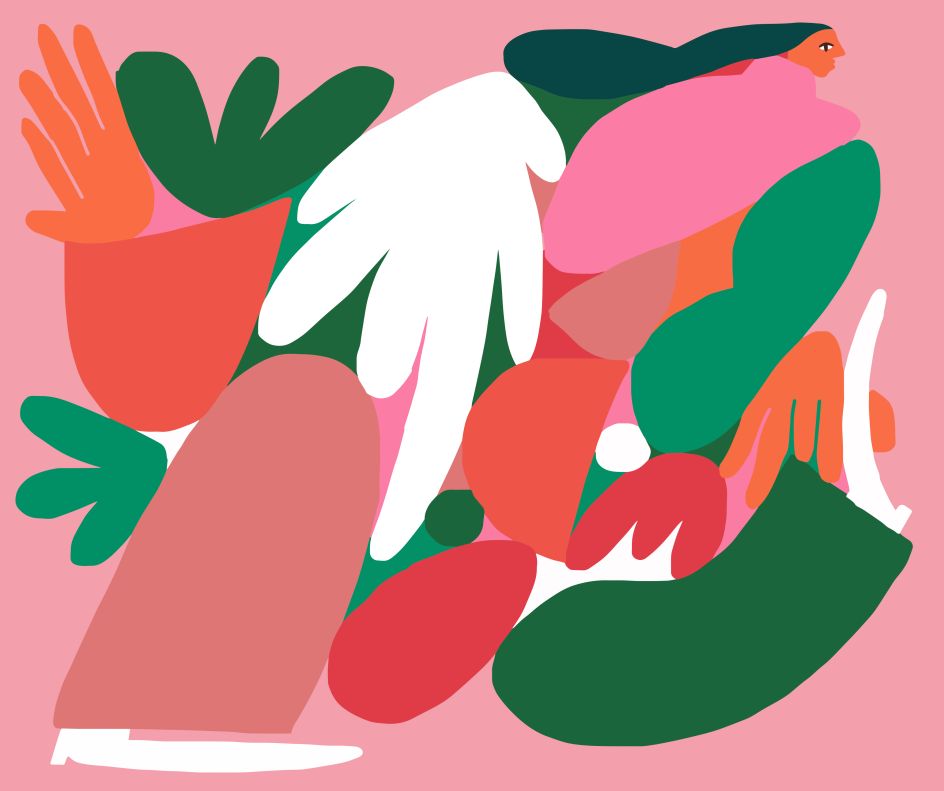
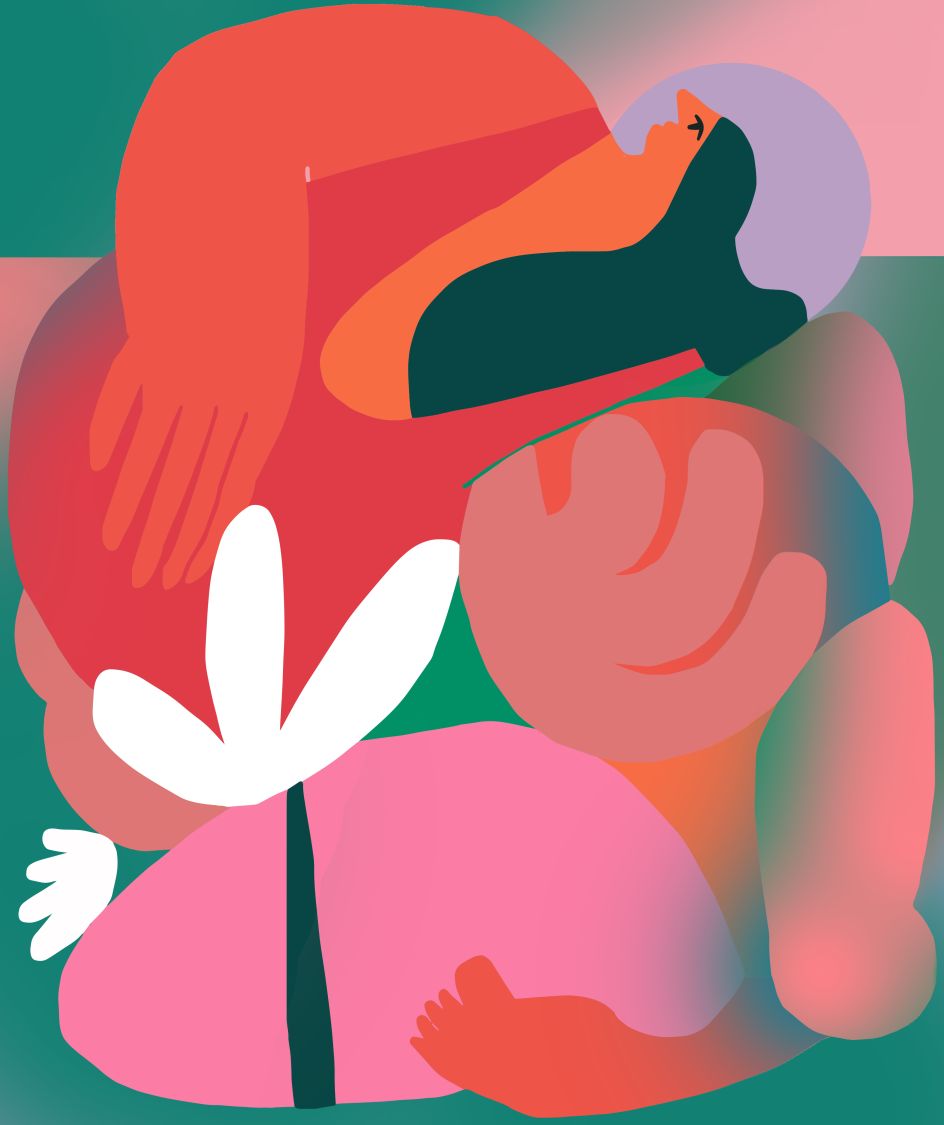
Do you think there's a change in the air in the creative industries? Do you think more people are trying to find that balance?
It depends on the person; there are people who thrive on a consistent flow of work, and there are those (like me) who prefer to break from a consistent workflow to allow themselves to recharge. I'm hoping that in the future, we can respect how each person prefers to work and stop advising others against what comes naturally to them workflow-wise.
You're right, it's very personal. Do you feel there's pressure to be successful?
American culture is definitely focused on success, whether that's defined by financial gain, fame, other interests, or a combination of all of them. I'm trying to reset what success means to me. Thus far, it's being contented each day, whether I make art or not, whether it's a happy day or not, or whether it's a productive day or not.
Some of that pressure could be attributed to social media. Has that generally been good for you?
Social media has helped democratise the industry for illustrators: no longer do we need to seek agency representation to find work, as we can use these platforms to help find work for ourselves.
With that said, the pressure of increasing my metrics, following, and engagement has definitely been tough emotionally. I recently decided to make my metrics and insights less visible, which has helped a ton. I'm learning to use social media as a tool to share my work with people I'd otherwise never meet, and with that perspective, my outlook shifts completely for the better.

















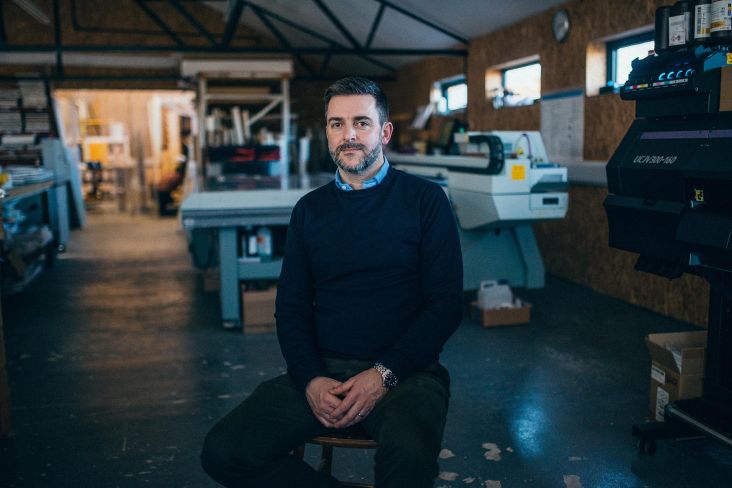
 and [Alice Wexell](https://www.instagram.com/alice.wexell/)](https://www.creativeboom.com/upload/articles/18/18592ad01a1be0e70bd7f82b5c35260f8fe695d3_732.jpg)
